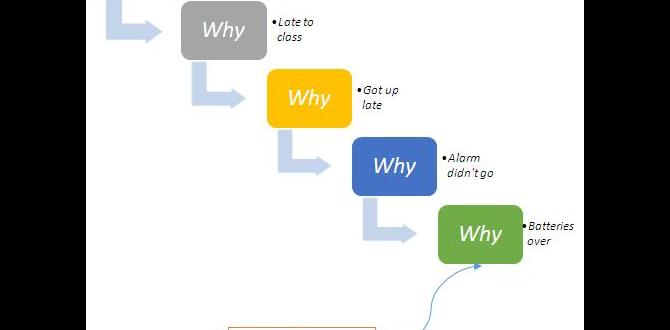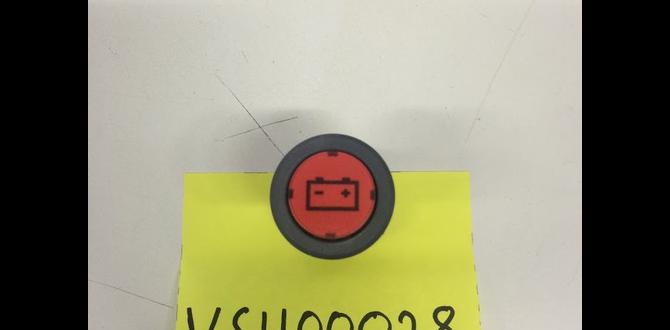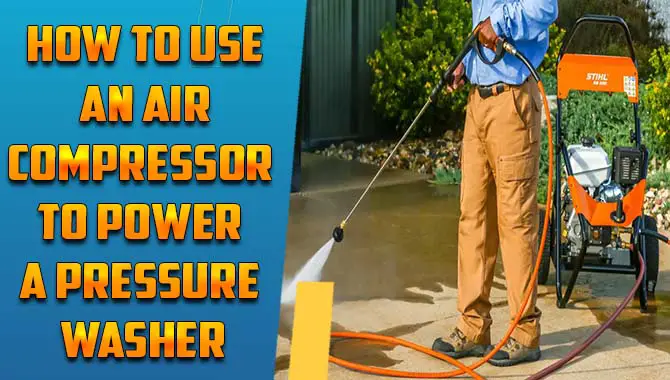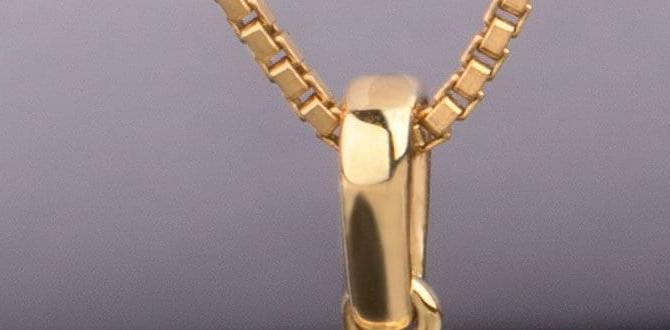Have you ever run to the bathroom only to watch your toilet flush slowly? It can be quite frustrating, can’t it? When you pull that handle, you expect a quick whoosh of water. Instead, you might see a timid trickle. What’s going on?
To understand why your toilet flushes slow, you need to know a few things. Sometimes, it’s a simple fix. Other times, it might need a little more attention. Did you know that a slow-flushing toilet is more common than you think? Many people experience this issue at some point.
Imagine being in a hurry. You flush, and the toilet groans like it’s on a lazy Sunday. You might wonder if the toilet just wants to take a nap. By reading this article, you will uncover the secrets behind slow toilet flushes. Let’s dive in to find out what might be wrong!
Why Does My Toilet Flush Slow? Common Causes And Solutions

Why Does My Toilet Flush Slow?
Toilet troubles can be puzzling! A slow flush often signals underlying issues. Clogs are common culprits. A blocked drain line can disrupt the flow. Sometimes, a faulty flapper valve allows water to leak, causing weak pressure. Also, mineral buildup affects flushing power. Did you know that the average toilet uses 1.6 gallons per flush? Poor performance wastes water and time. Addressing these problems can restore strong flushes and save money!Common Causes of Slow Toilet Flushing
Clogged Drain Lines. Inefficient Flapper Valve Operation.Toilets can be moody, like a cat refusing to come out from underneath the bed. One common issue is clogged drain lines. Over time, stuff builds up, causing flushes to slow down. Imagine trying to drink soda through a straw full of mashed bananas—yuck! Another culprit is the inefficient flapper valve operation. If this part doesn’t seal properly, water escapes too slowly, much like a sleepy sloth trying to climb a tree. Check these two areas to get that flush back in action!
| Common Causes | Description |
|---|---|
| Clogged Drain Lines | Build-up of waste and debris can block the flow, making flushing slow. |
| Inefficient Flapper Valve | A faulty flapper prevents water from moving quickly through the tank. |
Impact of Low Water Levels on Toilet Flush
Effects of Tank Water Levels. Adjusting the Float Mechanism.Low water levels can cause your toilet to flush slowly, making it feel like a snail on vacation! When the tank doesn’t fill high enough, there isn’t enough water to create a strong flush. You can adjust the float mechanism to fix this. If the float is set too low, the tank won’t fill properly. This adjustment can be as simple as turning a screw, making your toilet flush with the power of a tiny tornado!
| Float Position | Water Level | Flush Strength |
|---|---|---|
| Too Low | Low | Weak |
| Just Right | Optimal | Strong |
| Too High | Overflowing | Wet Floor |
Finding the right water level can save you time and money. No one enjoys a toilet that takes its sweet time!
Water Supply Issues and Their Role in Flush Performance
Low Water Pressure from Supply Lines. Blockages in the Supply Line.Toilet flushing can slow down for a couple of reasons related to water supply. First, low water pressure from the supply lines can restrict flow. This can make it hard for your toilet to flush properly. Second, blockages in the supply line can cause similar issues. Something might be stuck, preventing water from moving freely. Keeping your water lines clear will help your toilet flush easier.
What causes low water pressure in toilets?
Low water pressure can result from clogged pipes or issues with municipal water supply.Possible causes include:
- Old and rusty pipes
- Valves that are partially closed
- Tree roots invading pipes
Keeping an eye on these issues can make your toilet work better. Regular checks can prevent future problems.
Examining the Toilet’s Internal Components
Checking the Fill Valve Functionality. Importance of the Rim and Trapway Design.Toilet troubles can be a mystery, like finding socks that disappear in the wash! First, check the fill valve. If it’s slow, your toilet may take forever to refill. Next, the rim and trapway design play a big role. A poorly designed rim can cause weak flushing. The trapway should be smooth; any bumps can slow things down. Keep these parts in top shape for a speedy flush!
| Component | Function |
|---|---|
| Fill Valve | Controls water flow into the tank |
| Rim | Helps distribute water during the flush |
| Trapway | Carries waste out of the toilet |
Tips for Troubleshooting a Slow Flushing Toilet
Simple DIY Methods to Diagnose the Problem. When to Call a Professional Plumber.To tackle that slow toilet flush, start with a few simple checks. First, ensure the tank is filling up properly. Try adjusting the float valve if it’s stuck. Flush again! If it’s still slow, check for clogs in the bowl or drain. A good plunger might just be your best friend here. If you notice a gurgle instead of a glorious flush, it’s time to call a plumber. Don’t worry; you won’t need to pay for fancy superhero gear—just a qualified expert!
| Signs You Need Help | Your DIY Fixes |
|---|---|
| Frequent clogs | Use a plunger |
| Gurgling noises | Check for clogs |
| Draining slowly | Inspect the trap |
Remember, even toilets need a little TLC! Don’t hesitate to call in the professionals if the problem looks bigger than your DIY tools.
Preventative Measures to Ensure Optimal Flush Performance
Regular Maintenance Practices. Best Practices for Toilet Use.Keeping your toilet in top shape helps it work well. Regular cleaning is key. Check for clogs often. This stops buildup that slows flushing. Use the toilet correctly. Don’t flush trash or wipes. Only flush toilet paper. Following these easy steps can make a big difference.
- Check for clogs monthly.
- Clean the inside with a brush regularly.
- Flush only paper, not trash.
- Use water-saving devices to ensure strong flushes.
How can I maintain my toilet for better performance?
You can maintain your toilet by cleaning it often and using it properly. This includes checking for clogs and flushing only the right things. Regular care can keep your toilet flushing strong.
Understanding the Role of Plumbing in Toilet Efficiency
Importance of Professional Plumbing Installation. Upgrades for Better Flush Systems.Good plumbing helps toilets flush well. Proper installation is key. If pipes aren’t set up right, water can’t flow smoothly. This can cause slow flushing. Upgrading systems can help. Newer toilets use less water but flush better. To improve flushing, consider:
- Better flushing technology
- High-efficiency toilets
- Improved drain lines
These upgrades can make a big difference. A professional plumber knows how to fix problems and install new options. It’s worth the investment for a strong flush!
Why does my toilet flush slow?
Slow flushing can happen if the plumbing is blocked or not installed well. Regular maintenance helps keep things running smoothly.
Conclusion
In conclusion, a slow toilet flush can happen for several reasons. You might have a clogged drain, a weak flush mechanism, or low water pressure. Check these issues yourself or call a plumber if needed. For more tips, look up guides on toilet maintenance. Taking action can keep your toilet running smoothly and save you from bigger problems later!FAQs
What Are The Common Causes Of A Slow Toilet Flush?A slow toilet flush can happen for a few reasons. First, the toilet might be clogged with too much waste or toilet paper. Second, the flapper valve may not open fully, which slows down the water flow. Lastly, there could be a problem in the pipes, like buildup or blockages. Keeping the toilet clean can help it flush better!
How Can A Clogged Toilet Drain Affect Flushing Speed?When a toilet drain is clogged, it slows down the water flow. This means the toilet can’t empty quickly. So, when you flush, the water may not pull everything away fast enough. You might notice it takes longer for the toilet to refill, too. Fixing the clog will help the toilet flush normally again.
Can Low Water Pressure In My Home Contribute To A Slow Toilet Flush?Yes, low water pressure can make your toilet flush slowly. When you flush, the toilet needs enough water to work well. If there isn’t enough pressure, the water won’t come out fast. This means your toilet takes longer to empty and fill back up. You might need to check your water pressure to fix the problem.
How Do Toilet Flapper Issues Impact Flush Performance?Toilet flapper issues can make your flush weak or even stop it completely. The flapper is a rubber part that opens and closes when you flush. If it’s worn out or stuck, it doesn’t let enough water flow. This means your toilet won’t flush properly, and you might need to flush more than once. Fixing the flapper can help it work well again.
What Maintenance Steps Can I Take To Improve My Toilet’S Flushing Speed?To make your toilet flush faster, you can check the flapper. The flapper is a rubber part that opens when you flush. If it’s stuck or old, it won’t let enough water through. You should also check the tank water level. If it’s too low, add more water so your toilet can flush properly. Finally, clean any clogs in the pipes if you’re able to, so water flows freely.








